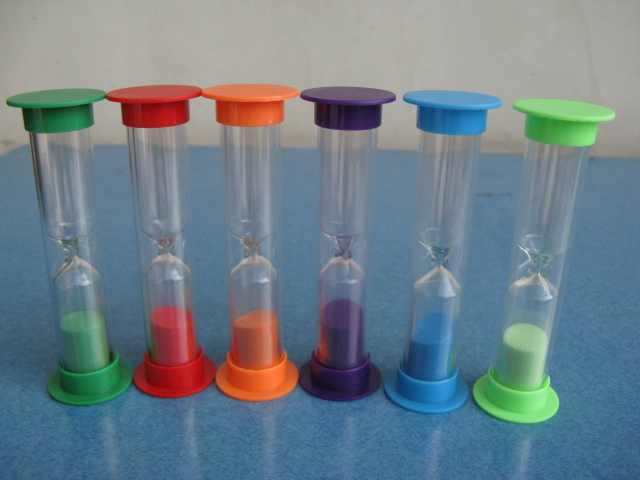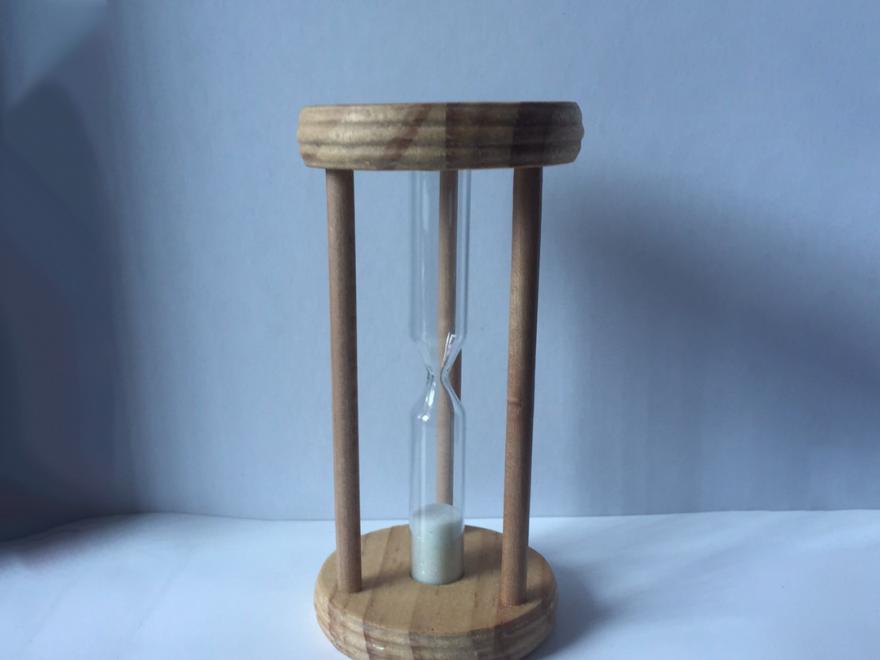
The hourglass in ancient China
Due to the fact that solar clocks such as gnomon may lose their effectiveness on cloudy days or at night. Therefore, ancient people invented instruments such as leaking pots and hourglass, oil lamp clocks and candle clocks to record time.
At first, the method of carving and leaking was used, but the water from carving and leaking is prone to freezing in winter, especially in the north. Later, quicksand was used to drive it. The "Astronomical Records of the Ming Dynasty" records that in the early period, Zhan Xiyuan created the "Five Wheel Hourglass". Later, Zhou Shuxue increased the size of the sand flow holes to prevent blockages and used six wheels instead. The "Collected Works of the Song Dynasty" also recorded the hourglass structure, including the dimensions of the parts and the number of teeth on each reduction gear. It was also stated that the fifth wheel had no teeth on the shaft tip, and the measuring disc with time indication was already very complete.
Hourglass is also an ancient instrument for measuring time. The manufacturing principle of hourglass is roughly the same as that of engraving. It measures time based on the time it takes for sand to leak from one container to another.
The most famous hourglass is the "Five Wheel Hourglass" created by Zhan Xiyuan in 1360. Flowing sand flows from the funnel-shaped sand pit into the sand hopper on the edge of the primary wheel, driving the primary wheel and thus driving the mechanical gears at all levels to rotate. The last gear drives the middle wheel to rotate on the horizontal plane. There is a pointer on the axis of the middle wheel, which rotates on an instrument disc with engraved lines to display the time. This display method is almost identical to the surface structure of modern clocks. In addition, Zhan Xiyuan cleverly added a mechanical toggle device on the middle wheel to remind two wooden figures standing on the five wheel hourglass to beat the drum and tell the time. At every hour or moment, two wooden figures will come out on their own and beat the drum to report the time. This hourglass has separated from auxiliary astronomical instruments and has become an independent mechanical clock structure. Due to the absence of water pressure restrictions, hourglass engraving is more accurate than leak engraving.
Western hourglass
The earliest hourglass discovered in the West was around 1100 AD, which was later than the hourglass in China.
The Western hourglass is said to have been invented by Alexander in the third century, where they sometimes carried it with them, just like the watches people carried. It is speculated that it was invented in the 12th century, along with the appearance of the compass, as an instrument for nighttime sea navigation (during the day, sailors could estimate time based on the height of the sun).
The discovery with concrete evidence dates back to the 14th century, and the earliest hourglass was a suitable government artifact mentioned in a written record from the fable Amblorenzetti in the 1338 mural. It appeared in listed ship shops during the same period. The earliest existing record is the sales receipt of Thomas Stetesham, a clerk on the English ship "Shangri La George", in 1345.
Since the 15th century, they have been widely used at sea, in churches, in industry, and in cooking. During Magellan's voyages around the world, each of his ships maintained an hourglass of 18. In ship paperwork, running an hourglass provides time for the ship's log.
Before the Jesuits entered Chinese Mainland, foreign businessmen and missionaries living in Macao had brought the medieval European clocks to Macao. Jesuits Michal Rvggier (1543-1607) and Matteo Ricci (1552-1610) came to China in 1581 and 1582, respectively. They not only carried clocks, but also had clockmakers accompanying them. The hourglass, water clock (i.e. water sundial), and self ringing clock driven by heavy hammers commonly used by Europeans were simultaneously introduced to China. After the hourglass was introduced to China, it was used as a timer in navigation. In the 23rd year of the Qianlong reign (1758), Zhou Huang wrote the "Brief History of Ryukyu Kingdom", which mentioned that when a ship sailed from Fuzhou to Ryukyu, the distance traveled was "60 miles per hour", and an hourglass was used to time it. "Every two and a half hours, there is zero, which is one hour".
